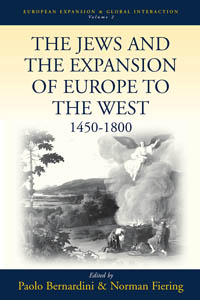Redrawing the Color Line: Gender and the Social Construction of Race in Pre-Revolutionary Haiti
Journal of Caribbean History
Volume 30, Numbers 1 & 2 (1996)
pages 28-50
John D. Garrigus, Associate Professor of History
University of Texas, Austin
This article examines the social and political construction of race in French colonial Saint-Domingue. After 1763 white elites redefined the category “free coloured” using negative images of femininity rooted in French political discourse. This engendering of racial stereotypes solidified a racial hierarchy that whites found alarmingly fluid. Planters’ councils and the governors they opposed evoked images of sexually powerful women and effeminized men to explain colonial despotism and disorder. In the late 1780s, however, free men of colour deliberately asserted their civic virtue and virility, challenging these stereotypes and eventually destroying the colonial racial hierarchy.
By 1789 French Saint Domingue was home to the largest, wealthiest, and most self-confident free population of African descent in the Americas. Comprising close to half the colony’s free population, these gens de couleur won civil equality with whites from the French Legislative Assembly in April 1792 and their political demands helped produce the Haitian Revolution. Why did such an extraordinary population emerge in this colony?
This article contends that the size, wealth, and self-confidence of this group were partly the result of new social and legal definitions of race formulated in Saint-Domingue after 1763. As this frontier society became the centerpiece of the French empire after the Seven Years’ War, prejudice established a deep and apparently permanent gulf between “whites” and “people of colour.” This new legal and social discrimination was deeply influenced by politicized French gender stereotypes, which whites used to reinforce a new, biological conception of racial difference. Old colonial families were relabeled gens de couleur. After 1769 whites considered free people of mixed African/European descent to be not merely “between” whites and blacks, but morally and physically inferior to both races. This exaggeration of the difference between white and brown colonists reinforced the ambiguous category “free people of colour” and served as an effective target during the French Revolution for wealthy “mulattos” and “quadroons” eager to claim full citizenship.
At the heart of the new racism were conflicts over Saint-Domingue’s political and cultural identity. After the Seven Years’ War new immigration from Europe and the increasingly “civilized” tone of elite colonial society raised the question of how “French” Saint-Domingue could become. Could a slave plantation colony produce a civic-minded public of the sort said to be emerging in France at this time? Many colonial planters, magistrates, and merchants wanted to believe it could. These elites appropriated metropolitan political discourse to explain why free Dominguan society differed from France. After the Seven Years’ War they began to describe free men and women of colour as passionate, narcissistic, and parasitic, terms used in France to vilify powerful women at court. This redirected and highly politicised misogyny helped solidify the ambiguous category gens de couleur, placing these families and individuals firmly outside respectable colonial society. The new image of people of mixed ancestry answered troubling questions about white behaviour in Saint-Domingue and seemed to guarantee that an orderly, rational colonial public could emerge. Grafting a stereotyped effeminacy onto emerging biological notions of race legitimised the disenfranchising of free people of colour, some of whom were indistinguishable from “whites” in wealth, education, distance from slavery, even physical appearance. In Saint-Domingue’s rough-and-tumble seventeenth-century buccaneer society, race was not the obsession it would later become. Early censuses did not distinguish between “whites” and “mulattoes,” but between free and enslaved residents. Before the massive importation of slaves for sugar work, children of mixed African/European descent were apparently considered free from birth. Even in 1685, the metropolitan authors of France’s slave law, the Code Noir, were more concerned about sin than race and racial mixture. The Code ordered colonial officials to confiscate mixed-race children and slave concubines from their owners, but stated that if a master married his slave mistress, she would be automatically free, as would the children of their union. Under the original terms of the Code Noir, ex-slaves enjoyed all the rights of French subjects…
For example, as he charted the somatic varieties produced by different combinations of African and European “blood,” Moreau also described distinct moral qualities. Blacks were strong and passionate while whites were graceful and intelligent. Therefore, mulattoes, who were one-half black, were stronger than quarterons, who were only one-quarter African. According to Moreau, African appetites for physical pleasure were especially pronounced when combined with white qualities. Mulattoes lived for sexual gratification, and the offspring of a mulatto and a black had a “temperament impossible to contain.”
Convinced that black women had strong psychological and physical inclinations to be mothers, Moreau believed that mulatto and quadroon women had difficulty giving birth, due to their physical and moral deficiencies. Men of mixed descent were similarly flawed. Mulattos were often intelligent and attractive, but they were lazy, beardless, foppish, and sensual, according to Moreau. Nor did free coloured military service challenge this image:
It seems that then [in the ranks a mulatto] loses his laziness, but all the world knows that a soldier’s life, in the leisure it provides, has attractions for indolent men … A mulatto soldier will appear exactly to the calls of day, perhaps even to those of the evening, but it is in vain that one tries to restrict his liberty at night; [the night|] belongs to pleasure and he will not indenture it, no matter what commitments he has made elsewhere…
Read the entire article here.







